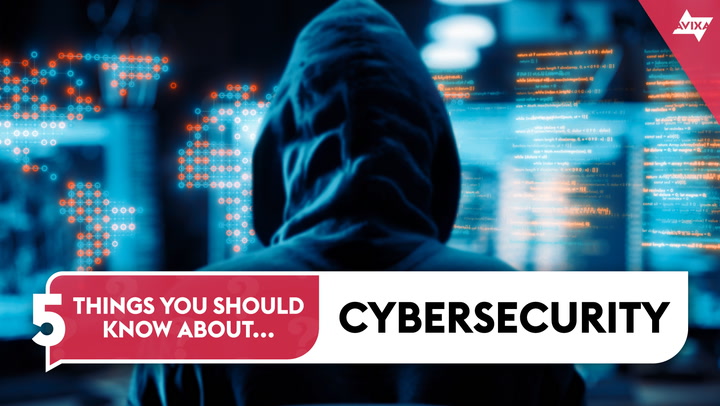
Cyber Resilience Act: Everything You Need to Know
With cyber risks skyrocketing, the EU’s Cyber Resilience Act (CRA) is set to overhaul standards for digital-enabled products across Europe. Years in the making, the Act strengthens protections for businesses and consumers by redefining how digital products are designed, distributed, and maintained. Officially in force since late 2024, the Act’s key compliance obligations for manufacturers, distributors, and importers take effect on December 11, 2027, giving organizations time to adapt.
What Is the Cyber Resilience Act?
The CRA imposes enhanced cybersecurity requirements on products with digital elements, requiring organizations to adopt a proactive, security-by-design approach across a product’s entire lifecycle. These rules are designed to ensure that connected devices, ranging from consumer electronics and smart home controls to industrial systems, consistently meet high security standards both before they reach the market and throughout their entire lifespan.
Want to learn more about strengthening your organization’s cybersecurity posture? Attend AVIXA’s D‑Sign Power Hour: Strengthening Cybersecurity in Digital Signage on September 18, 2025.
Register Here
Importance of the Cyber Resilience Act in Today’s Digital Landscape
Modern digital ecosystems are highly interconnected, creating vulnerabilities that cybercriminals are exploiting at unprecedented levels. These risks, which include ransomware attacks and large-scale data breaches, can cascade across networks and industries, causing widespread operational, financial, and reputational damage. The CRA is designed to mitigate these risks by enforcing robust cybersecurity measures that protect both sensitive data and essential infrastructure.
Key Provisions of the Cyber Resilience Act
The CRA establishes a clear framework for cybersecurity compliance, specifying which products and organizations must adhere to its rules, the technical standards required, and the consequences of non-compliance. By defining responsibilities for manufacturers, distributors, and importers, the Act ensures that digital products entering the EU market are secure from cradle to grave, while providing penalties and market restrictions for organizations that fail to meet these obligations.
Scope and Applicability
The Act raises the benchmark security standards for all digital products entering the EU market. Its scope and applicability cover multiple categories that include:
- Products With Digital Elements: All products sold in the EU with digital components must comply with its requirements from design through disposal.
- Connected Devices: Consumer products such as cameras, televisions, refrigerators, and even toys must meet security standards before being released to market.
- Hardware and Software Integration: Both standalone commercial software and integrated hardware-software products are required to comply, ensuring end-to-end protection for all digital elements.
- Supply Chain Obligations: Manufacturers, distributors, and importers share accountability for compliance throughout the value chain.
It’s important to note that products regulated under other EU frameworks, such as medical devices, motor vehicles, civil aviation, marine equipment, and free and open-source software (FOSS) that is not supplied as part of a commercial activity, are excluded.

Security Requirements for Digital Products
The CRA requires manufacturers to build in cybersecurity measures that ensure vulnerabilities are actively managed and products are continuously secure. These measures include:
- Lifecycle Security: Products must be designed, produced, and supported with cybersecurity protections integrated from design through end-of-life.
- Vulnerability and Incident Management: Manufacturers must identify, report, and resolve exploited vulnerabilities and cybersecurity incidents promptly.
- Default Security Settings: Devices must be delivered with secure configurations that reduce exposure to security threats.
- Security Updates: Timely patches to address vulnerabilities must be provided for as long as the product is expected to be in use.
- Clear Instructions: Consumers must receive accessible and understandable guidance on how to use products securely.
- Documentation: Manufacturers must maintain detailed records of security measures to ensure product transparency and accountability.
Compliance and Penalties
The CRA enforces strict compliance, with non-compliance carrying serious consequences. Businesses must understand these requirements to avoid penalties and market restrictions:
- Financial Penalties: Organizations may be fined up to €15 million ($16.05 million USD) or 2.5% of their total worldwide annual turnover for the most severe non-compliance, with lesser penalties for other levels of infringements.
- Market Access Restrictions: Authorities can recall non-compliant products or remove them from the EU market.
- CE Marking: Products placed on the EU market on or after December 11, 2027, should bear the CE mark to demonstrate conformity and best practices.
- Ongoing Monitoring: National authorities will oversee compliance and take corrective actions as necessary.
Impact on Businesses and Consumers
By enforcing stricter cybersecurity standards, the CRA is driving organizations to rethink their design, development, and supply chain practices, while giving consumers stronger protections, greater transparency, and more confidence in the products they buy and use. These changes affect business operations, consumer experiences, and the challenges organizations will likely face in meeting the new requirements.
How Businesses Need to Adapt
Business organizations must take a proactive approach to cybersecurity. strengthening their practices in design, development, and supply chain management to maintain long-term operational security and protect users. Key measures include the following steps:
- Security-by-Design: Embed security from the earliest design stages to prevent vulnerabilities before products reach the market.
- Supply Chain Security: Verify that third-party components and software meet CRA standards.
- Compliance Infrastructure: Use dedicated systems for testing, monitoring, and documentation to support consistent adherence.
- Investment in Expert Resources: Hire cybersecurity specialists or partner with trusted experts to ensure that technical requirements are met.
- Lifecycle Management: Provide security updates and ongoing support throughout a product’s lifecycle.
- Documentation and Reporting: Maintain comprehensive compliance records to facilitate regulatory review and transparency.
📖Recommended reading: 5 Essential Tips from a Cybersecurity Expert
Benefits for Consumers and End-Users
The CRA puts consumer safety front and center. From stronger protections against cyberattacks to clear instructions and consistent security standards, users benefit from devices that work safely and reliably while reducing risks to their data and finances. Key benefits of the Act include:
- Enhanced Product Security: Devices will be designed and maintained with built-in protections against cyberattacks.
- Greater Transparency: CE marking and clear user instructions help consumers make informed choices.
- Consistent Security Levels: Harmonized rules ensure uniform protection across product categories.
- Long-Term Protection: Security updates extend product lifespan and maintain device safety.
- Reduced Financial Risk: Stronger cybersecurity measures lower the likelihood of fraud, data loss, and other financial damage.
Challenges and Criticisms
While the CRA represents a major step forward in digital security, it has sparked debate. For many organizations, adapting to its sweeping provisions within tight timelines and limited resources is a significant challenge, complicated by its implementation complexity and the reservations voiced by some EU member states before its introduction.
Implementation Hurdles
The scale of the CRA’s requirements creates significant operational challenges for organizations that must navigate complex technical standards while also managing the time and resources needed for compliance. Common hurdles include:
- Technical Complexity: Applying a single set of cybersecurity standards across a wide variety of digital products requires careful and highly tailored implementation.
- Timeline Pressures: Meeting the December 2027 deadline is likely to create strain for organizations already balancing other regulatory demands.
- Resource Constraints: Smaller businesses may lack the financial or technical capacity to comply fully with the Act’s obligations.
- Cross-Border Enforcement: Ensuring consistent enforcement across the EU requires strong coordination among national authorities.
- Legacy System Integration: Older products may need costly retrofitting or replacement to align with new requirements.
- Skills Shortage: A limited pool of cybersecurity professionals could hinder organizational readiness and slow compliance efforts.
Industry Concerns and Feedback
Industry stakeholders have expressed both support and concerns, praising the CRA’s goals while questioning its complex requirements. Key concerns include:
- Compliance Costs: Stakeholders warn that the expense of upgrading systems and processes could disproportionately burden smaller companies.
- Innovation Slowdown: Some argue that rigid requirements may stifle innovation, particularly in rapidly evolving technology sectors.
- Overlap With Existing Laws: Industry groups have called for clearer guidance on how the CRA interacts with other EU and global regulatory frameworks.
- Global Competitiveness: Companies fear that stricter EU rules could disadvantage them compared to international competitors operating under less demanding standards.
These challenges and concerns underscore the complexity of bringing the CRA into practice. Striking the right balance between strong protections and practical implementation will ultimately determine how effectively the Act can deliver on its promise.
The Future of Cyber Resilience
The CRA marks a milestone in the future of cybersecurity, shaping how organizations approach product development and risk management. This shift may well drive the evolution of global cybersecurity standards, encouraging international cooperation and setting the stage for a more secure and resilient global digital ecosystem.
Evolving Cybersecurity Standards
As the CRA drives compliance, organizations will adopt automated tools, certifications, and best practices. Key trends to watch for include:
- Rising Industry Standards: An increasing number of technical benchmarks and best practices will evolve to ensure compliance.
- Certification Infrastructure: Third-party testing will expand, enabling companies to demonstrate adherence.
- Automation Compliance: Security tools will integrate continuous, autonomous monitoring and validation.
- Ongoing Threat Detection: Real-time monitoring systems will become the standard to enhance operational security.
- Security-First Design: Security-by-design will become the norm rather than an afterthought.
Global Implications and Cooperation
The CRA’s impact and standards are reshaping international cybersecurity expectations and trade practices. Global companies will need to align with these requirements and technical standards in the following ways:
- Regulatory Harmonization: Regions outside the EU may follow suit, adopting CRA-inspired rules.
- Market Access Requirements: International suppliers will need to meet EU security standards to sell products in the region.
- Standards Alignment: ISO, IEC, and other standards bodies may update technical standards to align with the CRA’s provisions.
- Trade Agreements: Cyberprotection will become a preeminent element of trade and diplomatic discussions.
- Global Supply Chain Security: International suppliers must comply with CRA rules to ensure end-to-end protection.
Cyber Resilience Act: The Takeaway
The CRA transforms cybersecurity from a best practice to a mandatory requirement for all digital products entering the EU market. Businesses that adopt these standards will reduce risk, enhance customer trust, and develop a leadership position in creating a more secure digital economy.
For more news and insights related to cybersecurity, head to AVIXA Xchange.
Photo credit: Getty Images/gopixa








